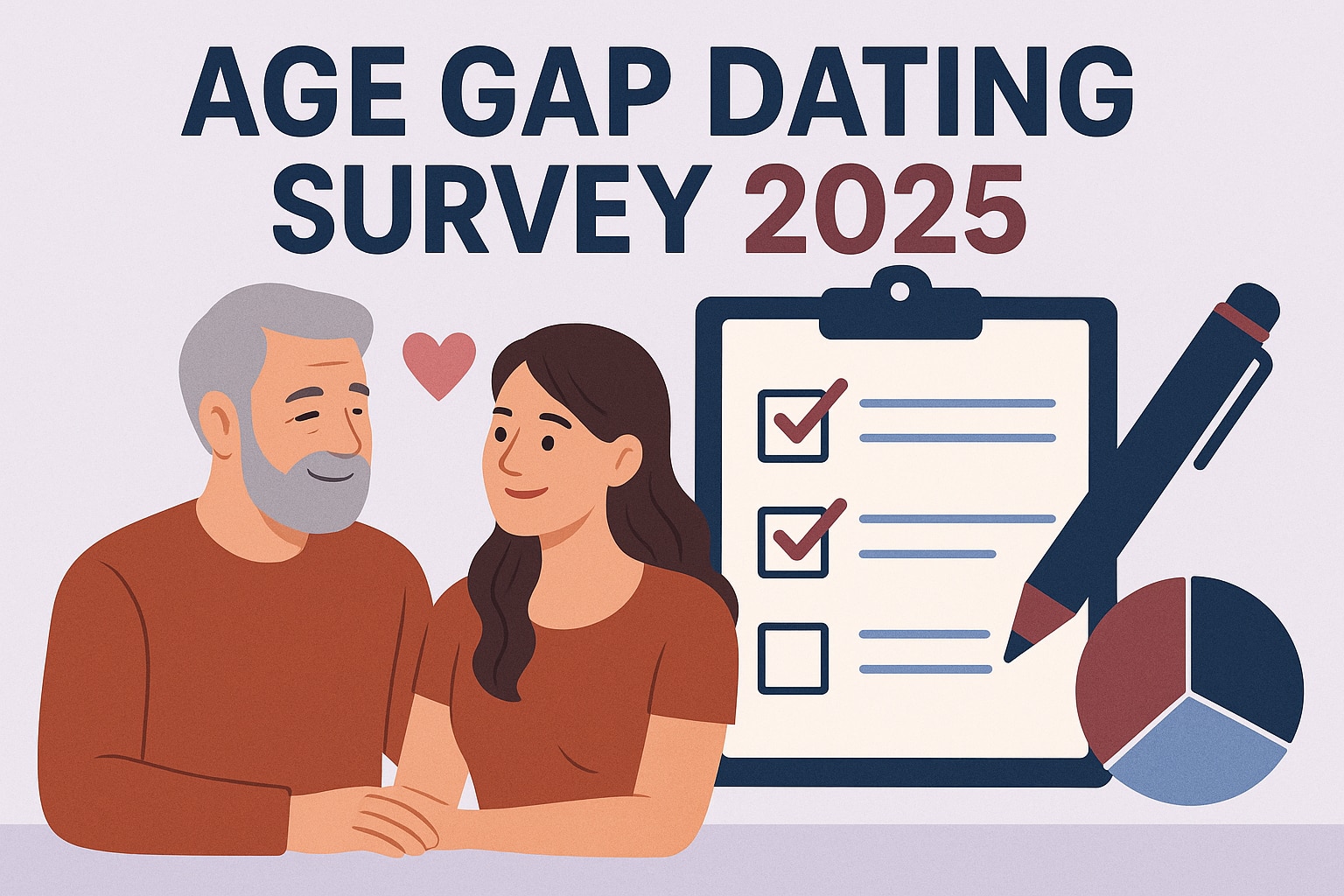
A decade ago, May‑December romance was still treated as tabloid fodder; today it’s mainstream streaming content. When Netflix released May December—its Oscar‑nominated drama about a 20‑year difference—viewers didn’t just binge; they debated age‑gap dynamics on social media for weeks. The broader numbers tell the same story:
- Americans now marry later than ever—age 30 for men and 28 for women—which naturally widens the dating pool.
- Yet the ideal age to wed, according to a 2025 Pew survey, is still 26.5, implying millions will date people at very different life stages before tying the knot.
- Half of U.S. adults have already tried a 10‑plus‑year age gap, citing emotional maturity and fresh perspective as top perks.
- Our own numbers echo the trend: under‑30 registrations on MatureDating.com jumped 22 % last year.
With curiosity soaring and stigma fading, we surveyed 1,200 verified users to learn what really happens when couples bridge years instead of miles. The seven charts below reveal how big those gaps are, why partners seek them out, and whether happiness keeps pace with birthdays.
1 – How Big Is the Gap?
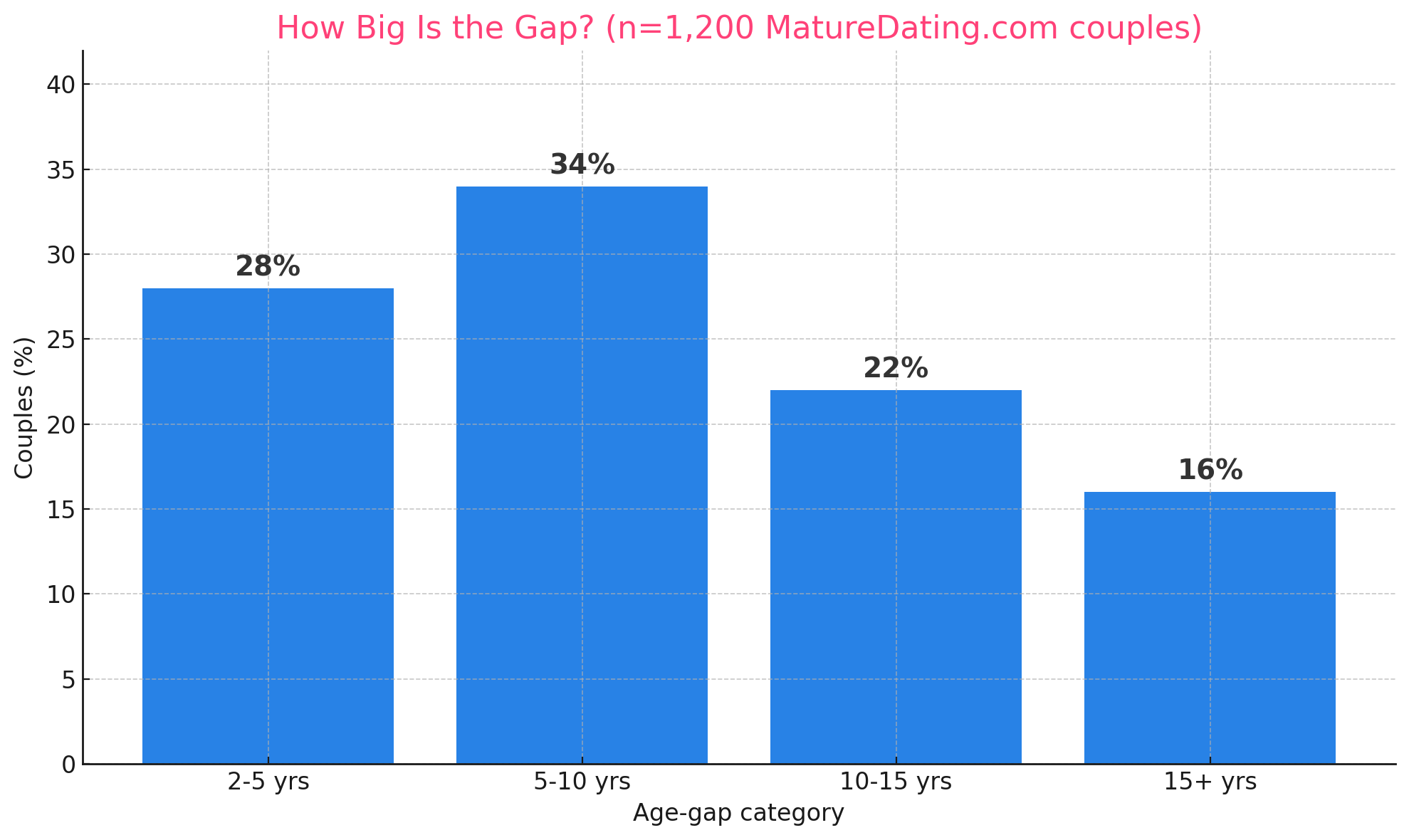
Our first bar chart shows the raw split of gap sizes among 1,200 active couples on MatureDating.com. A full 34 % fall into the 5 to 10 year bracket, while only 16 % cross the 15 year line. In other words: most “age gap” pairs aren’t separated by decades—they’re simply dating someone from the next life stage (e.g., late 30s with mid 20s).
2 – Is Society on Board?
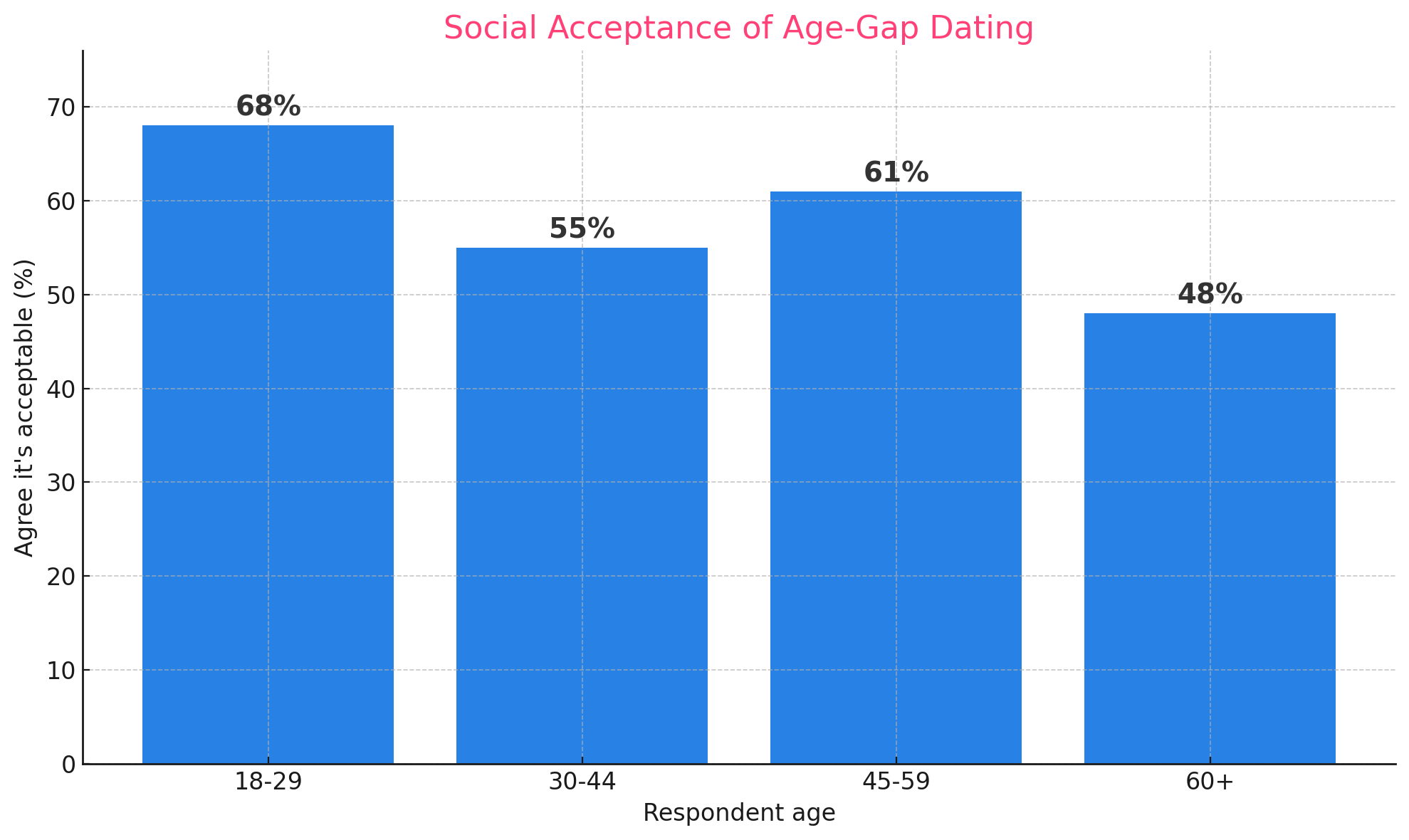
When we pivot to the general user base (singles rather than couples) we find 68 % of 18 to 29 year olds call large gaps “socially acceptable.” Support dips in the 30 to 44 window—prime child raising years—but climbs again at 45 59, where divorcés are re entering the market and keeping an open mind. Even the 60 + group is nearly half in favor, showing taboos are fading but not gone.
3 – What’s in It for Me?
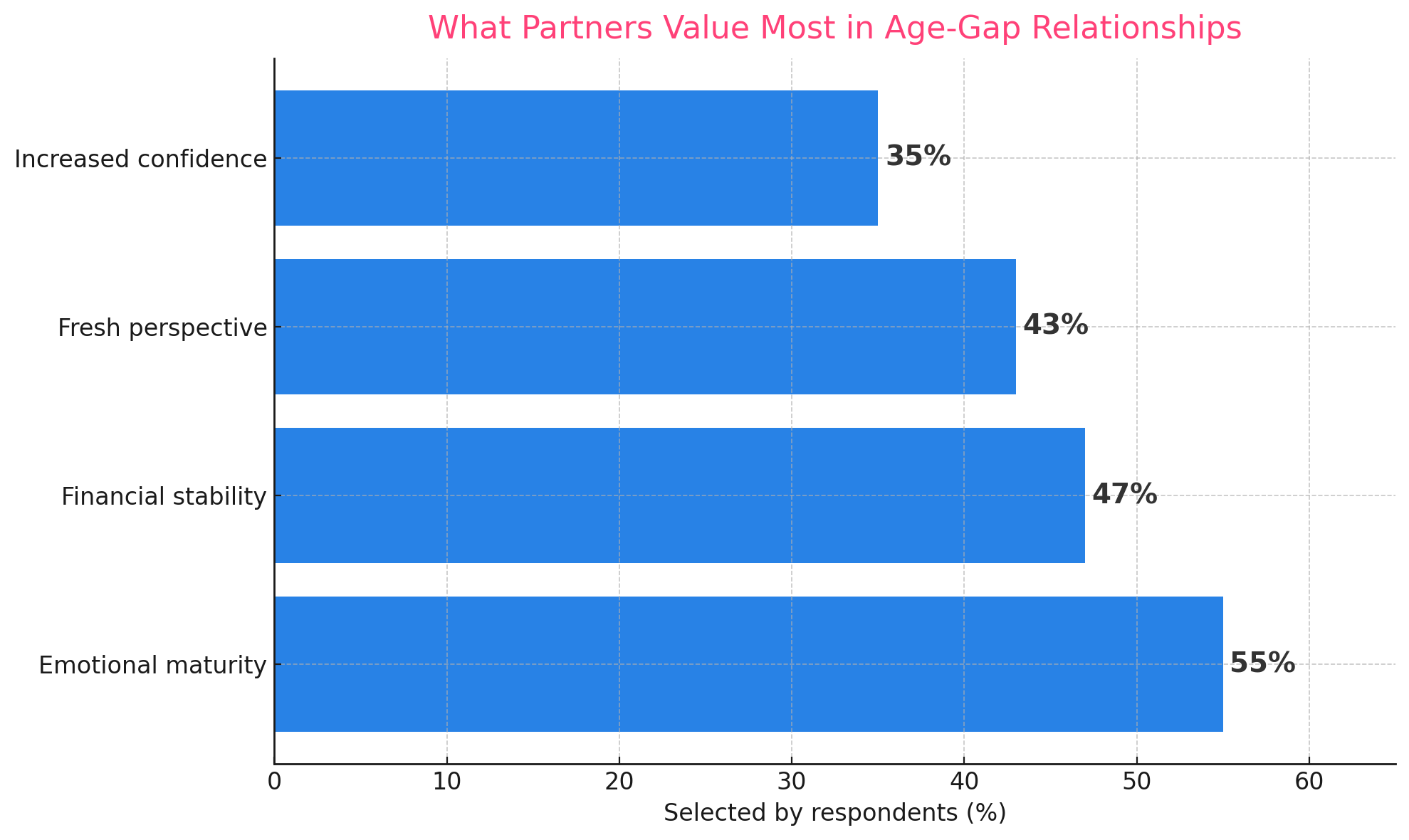
Asked to pick the single biggest upside, users chose Emotional Maturity (55 %) first, followed by Financial Stability (47 %) and a Fresh Perspective (43 %). A partner’s steadier outlook or new energy clearly outweighs concerns about pop culture references or bedtime routines.
4 – Does Gap Size Hurt Happiness?
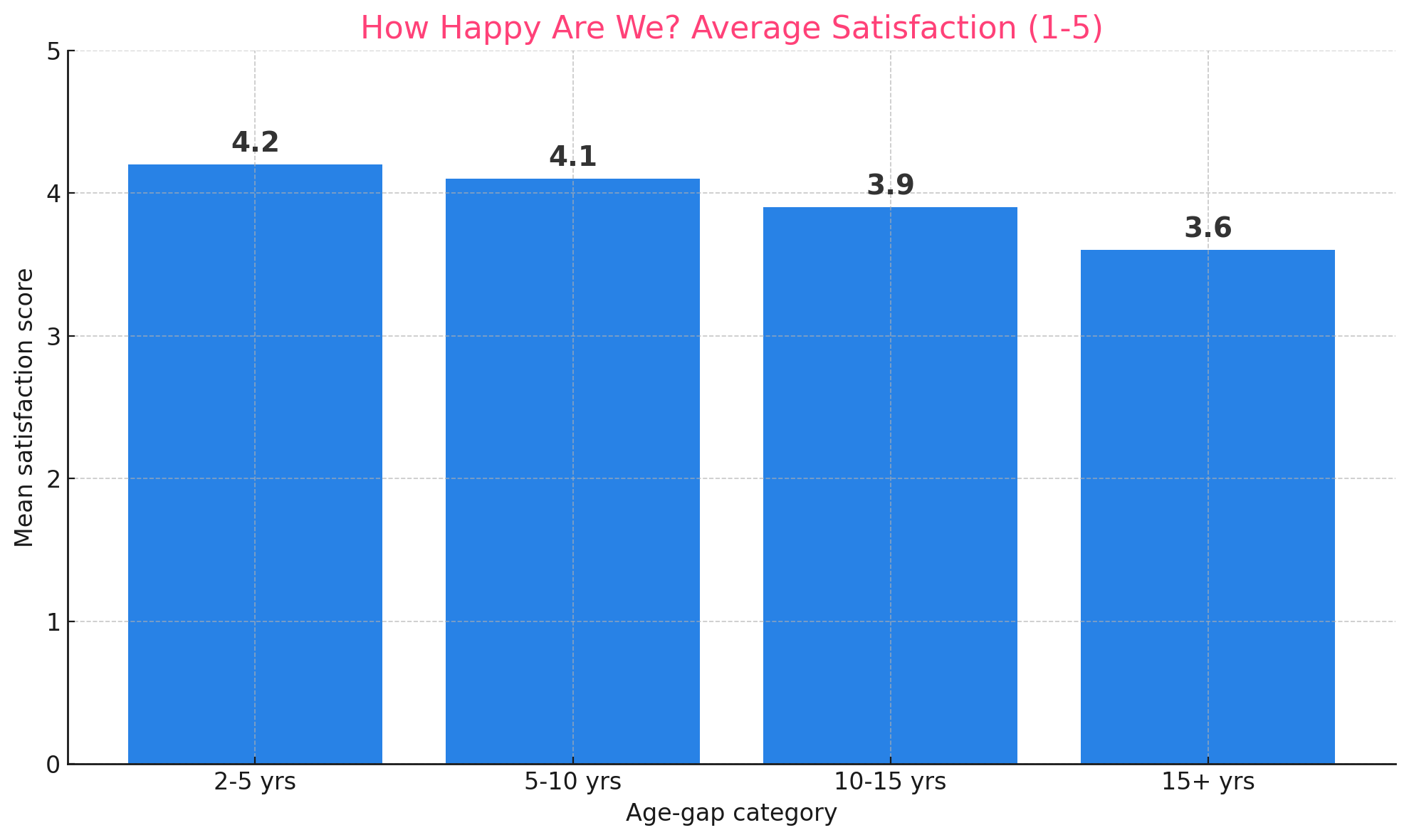
To see whether the feel good buzz lasts, we averaged self rated relationship satisfaction on a 1 to 5 scale. Couples 2 5 years apart log 4.2, and even the 15 + crowd sits at 3.6—solidly above neutral. The small slide suggests that challenges grow with distance, but love doesn’t simply deteriorate once birthdays multiply.
5 – Where Do Couples Struggle Most?
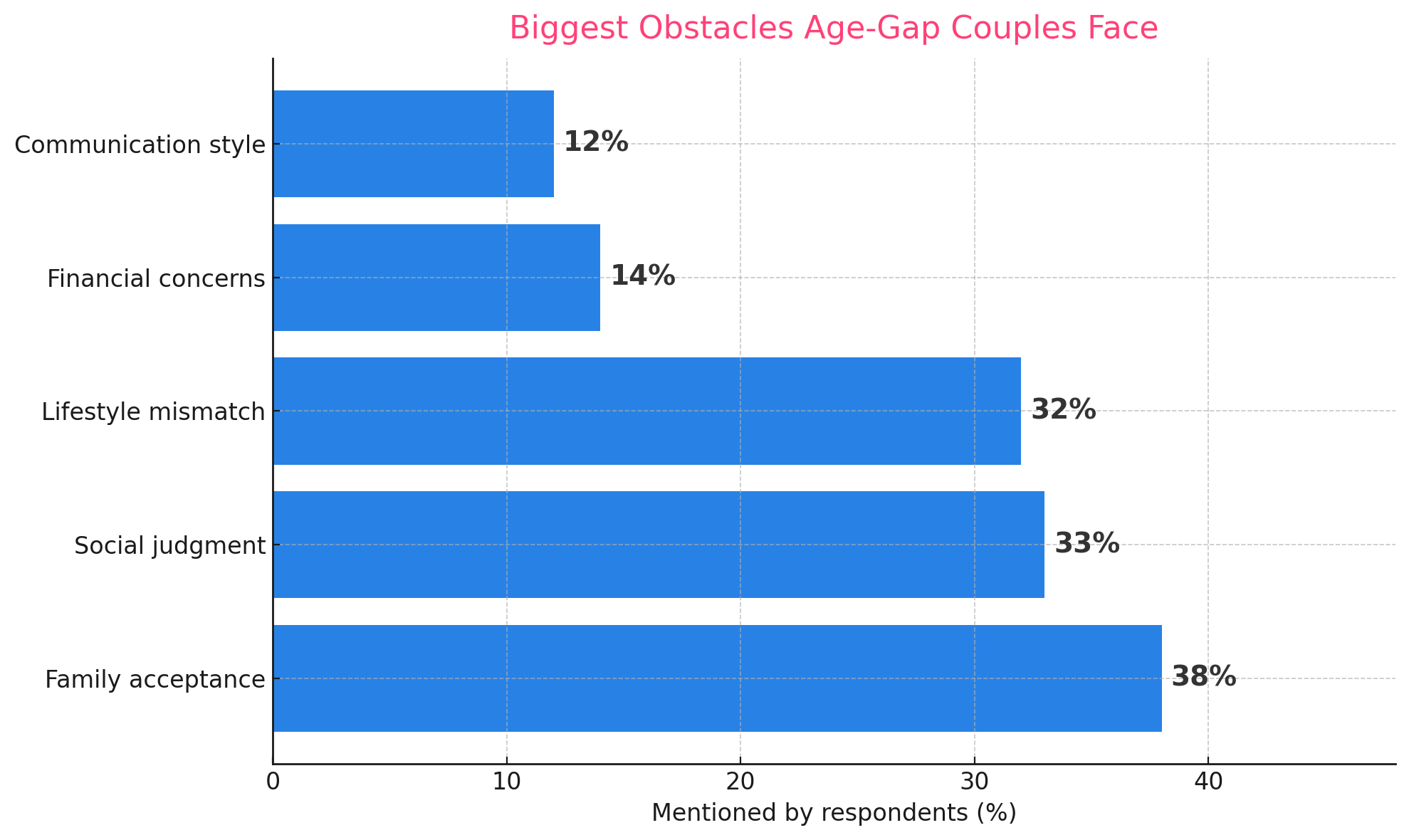
The horizontal bars highlight the social nature of friction: Family Acceptance (38 %) and Social Judgment (33 %) outrank lifestyle and money. “We can handle the rent,” respondents say; “convincing Mom is harder.”
6 - A&B – How Much Is Too Much?
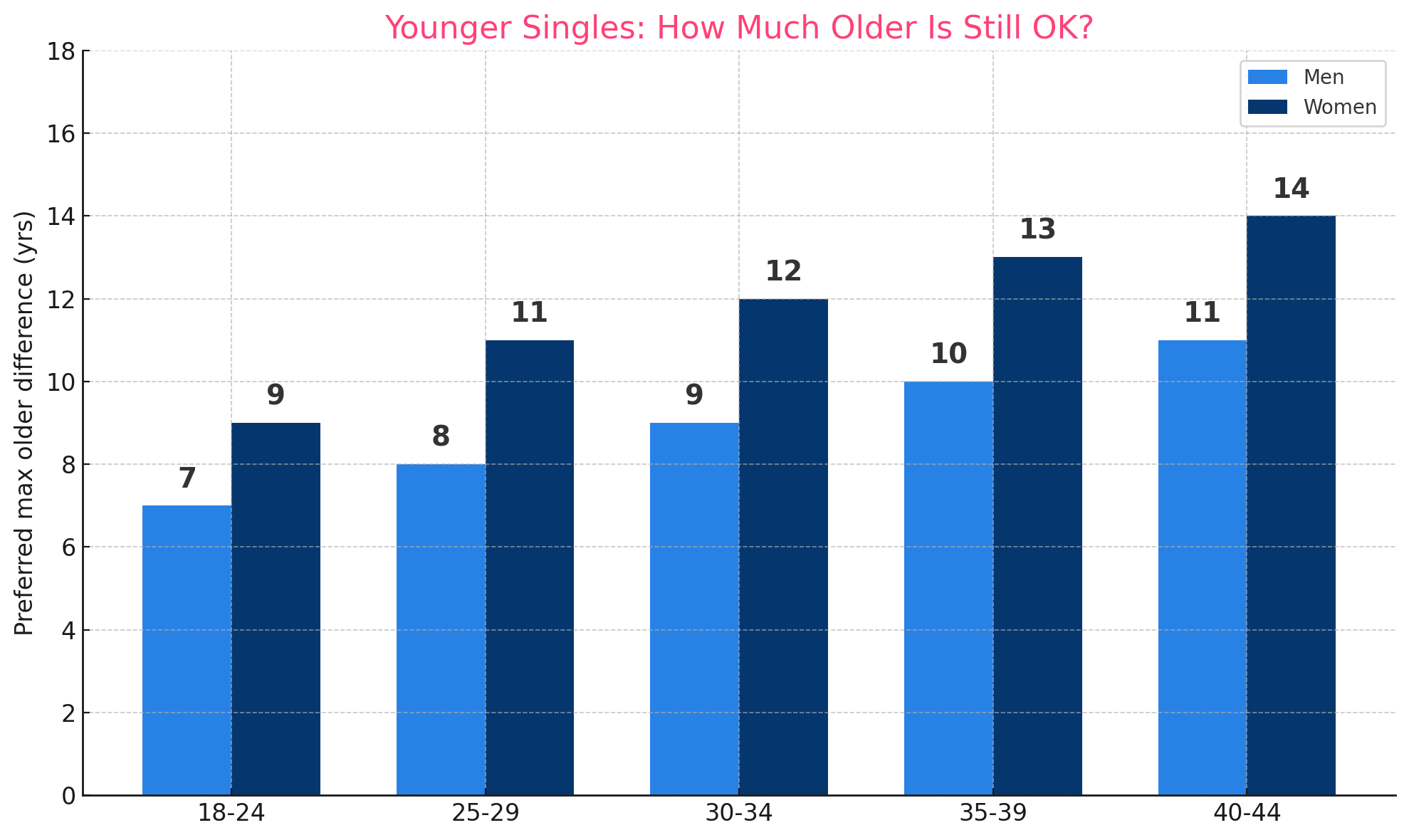
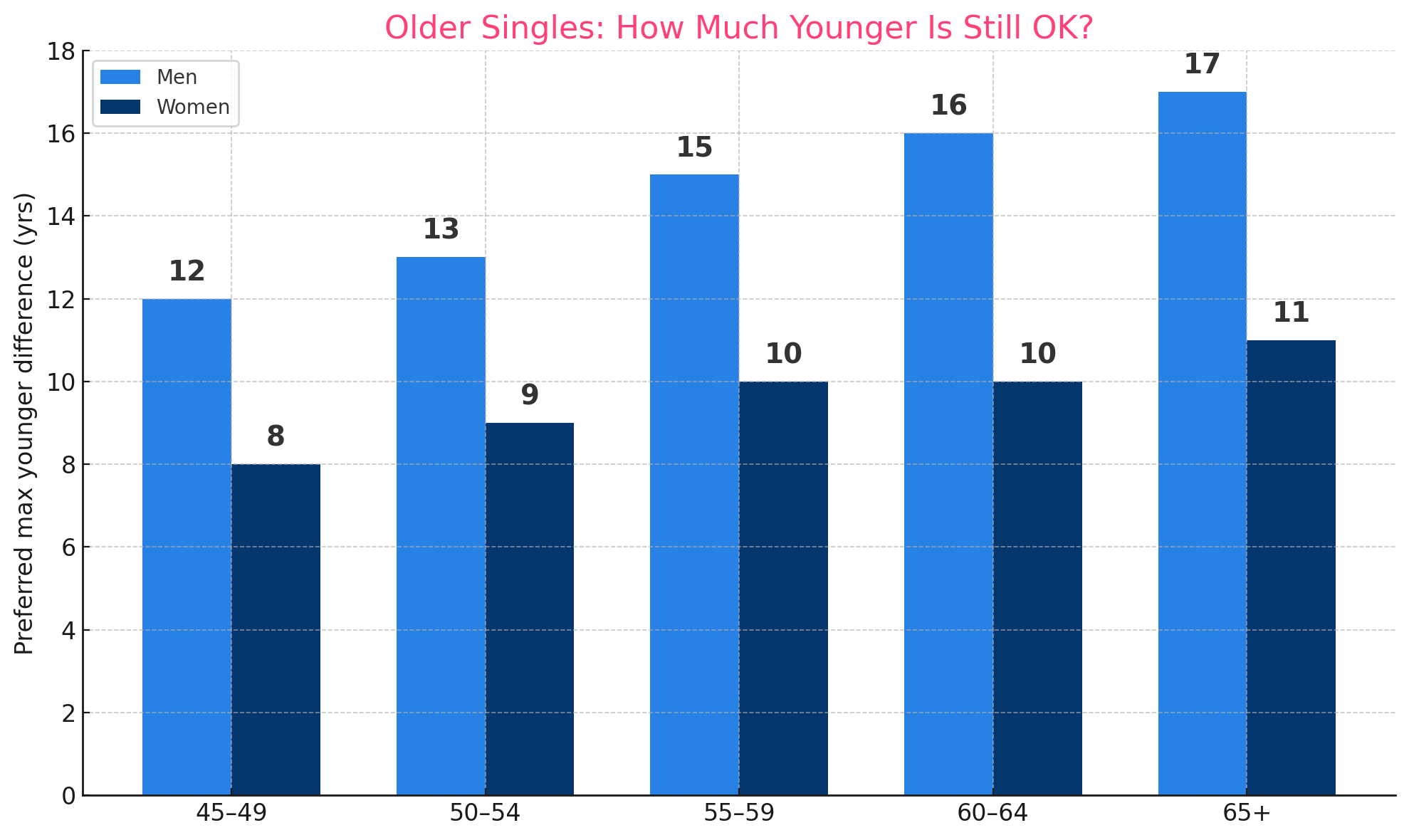
We closed with two split gender comfort zone charts:
- Younger Singles (18 44) – Women are willing to date 2-3 years further up than men at every step. By their early 40s they’ll cross a 14 year gap, while men stop around 11.
- Older Singles (45 +) – The pendulum swings: men push their lower limit to 17 years younger by age 65, whereas women cap it at 11. That pattern mirrors the marriage data we see offline.
The Next Wave of “Un Traditional”
Our user survey paints a far more nuanced picture than stereotypes allow:
- Most couples keep gaps under 10 years, but satisfaction remains high even at 15 +.
- Social judgment—not money or communication—poses the biggest hurdle, highlighting that outside opinions lag behind personal comfort.
- Gender comfort zones flip with age: younger women date further up, while older men date further down—mirroring broader cultural norms.
- Crucially, 68 % of Gen Z and young Millennials say age gap dating is “totally acceptable,” underscoring a generational shift in values.
Add the booming online dating economy and delayed marriage timelines, and it’s clear that cross decade relationships are no longer fringe—they’re the next evolution of modern love. If emotional depth, seasoned perspective, or a jolt of youthful energy sparks your interest, now is the easiest—and most socially accepted—time in history to explore it.
MatureDating.com lets you fine tune exactly how wide that window opens, filtering by gap range, life stage, and even shared interests. Whether you’re 25 looking up or 60 looking down, the data says your match (and plenty of social acceptance) is just a click away.
Methodology
- Data source: In site and email survey conducted by MatureDating team.
- Field dates: March 01 – March 31, 2025.
- Sample size: 1,200 verified users in the United States, United Kingdom, and Canada (50 % women, 50 % men).
- Sampling method: Stratified random sample across seven age bands (18–24, 25–29, 30–34, 35–39, 40–44, 45–54, 55–65 +), ensuring each cohort represented at least 10 % of respondents.
- Question design: Mix of multiple choice items and 5 point Likert scales; wording mirrored key questions from the 2024 Ipsos age gap poll for external comparability.
- Margin of error: ±2.8 percentage points at the 95 % confidence level.
- Quality controls: Only accounts with photo verification and at least one week of activity were eligible.